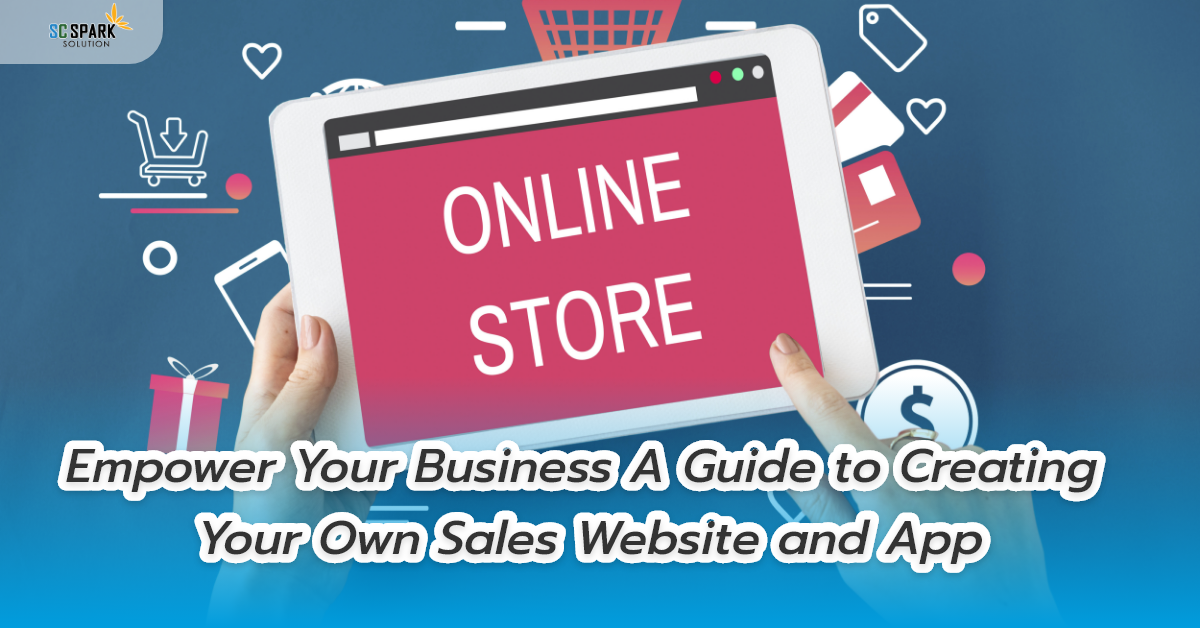Empower Your Business A Guide to Creating Your Own Sales Website and App
In the digital era, establishing an online presence for your business is not just a trend; it’s a necessity. A well-crafted sales website and a user-friendly sales app can significantly enhance your reach, streamline transactions, and elevate the overall customer experience. In this guide, we’ll walk you through the essential steps to create your own sales website and develop a sales app that propels your business into the digital forefront.
Building Your Sales Website
Step 1 Define Your Objectives and Target Audience
Before diving into the technicalities, clearly define your business objectives and identify your target audience. Understanding your goals and the needs of your audience will guide the design and functionality of your sales website.
Step 2 Choose a Domain Name and Hosting Platform
Select a unique and memorable domain name that reflects your brand. Choose a reliable hosting platform that suits your business needs. Popular options include WordPress, Wix, Shopify, and Squarespace.
Step 3 Design a User-Friendly Interface
Create a visually appealing and user-friendly interface. Ensure that your website is responsive and optimized for various devices. Use high-quality images, clear navigation menus, and compelling content to engage visitors.
Step 4 Integrate E-Commerce Functionality
Choose an e-commerce platform that aligns with your business model. Platforms like WooCommerce (for WordPress), Shopify, and Magento offer robust features for online transactions. Implement secure payment gateways to ensure customer trust.
Step 5 Optimize for SEO
Implement search engine optimization (SEO) strategies to enhance your website’s visibility on search engines. Conduct keyword research, optimize meta tags, and create high-quality, relevant content to improve your site’s ranking.
Step 6 Implement Analytics
Integrate analytics tools like Google Analytics to track website performance. Analyzing user behavior and traffic data will provide valuable insights for optimizing your site and making informed business decisions.
Developing Your Sales App
Step 1 Choose the Right Platform
Decide whether you want to develop a native app (iOS or Android) or a cross-platform app. Each option has its pros and cons, so consider factors like your target audience, budget, and desired features.
Step 2 Plan Your App’s Features
Define the features and functionalities you want your sales app to have. This may include product catalogs, secure login, shopping carts, and push notifications. Prioritize features based on their importance and impact on the user experience.
Step 3 Select a Development Approach
If you have coding skills, you may opt for native development using languages like Swift (iOS) or Kotlin/Java (Android). Alternatively, use app development frameworks like React Native or Flutter for a cross-platform solution. If coding isn’t your forte, consider hiring a professional developer or using no-code/low-code platforms.
Step 4 Design an Intuitive User Interface
Craft a user interface that aligns with your brand and ensures a seamless user experience. Consider user-friendly navigation, visually appealing elements, and intuitive interactions.
Step 5 Implement Secure Payment Options
If your app involves transactions, prioritize security. Integrate secure payment gateways and encryption to protect user data and build trust in your app.
Step 6 Test Thoroughly
Before launching your app, conduct rigorous testing to identify and address any bugs or usability issues. User testing, beta testing, and quality assurance processes are essential for a successful launch.
Step 7 Launch and Promote
Once your sales app is polished and ready, launch it on the respective app stores. Implement marketing strategies to promote your app, including social media campaigns, email newsletters, and collaborations.
Conclusion
Creating a sales website and app is a strategic move to expand your business’s reach and enhance customer engagement. By following these steps and staying attuned to evolving digital trends, you can establish a strong online presence, boost sales, and provide a seamless experience for your customers. Remember to continually update and optimize both your website and app based on user feedback and changing market dynamics for sustained success.
For those of you who want to make an E-Commerce app, a shopping app or a Delivery app, we recommend SC-Spark Solution, an app making company. experienced With direct experience from Silicon Valley, being a company that develops more than 100 applications around the world, both custom and ready-made for you to choose from. If anyone is interested in making mobile applications or websites, you can contact here
Contact us at
Facebook : SC-Spark Solution บริการทำแอปพลิเคชั่น
“Nothing is impossible”







